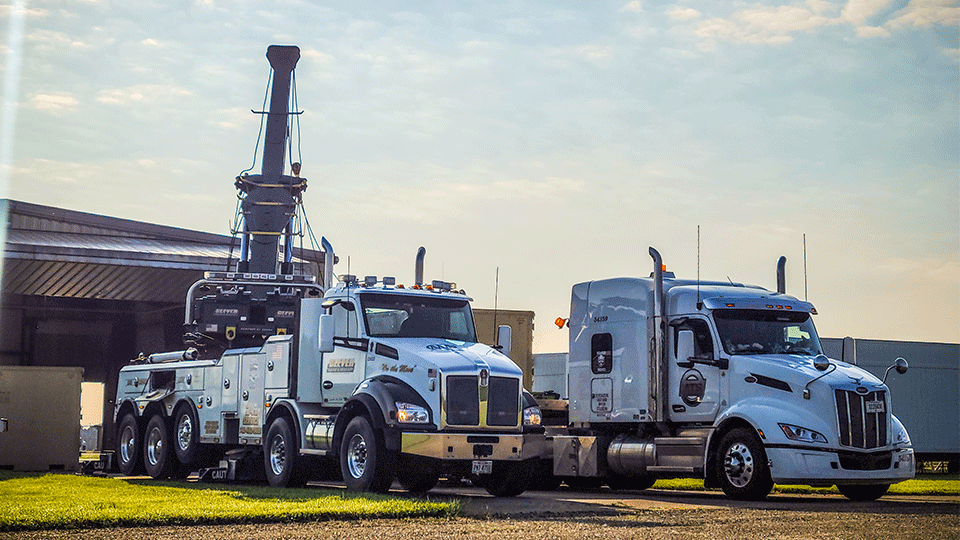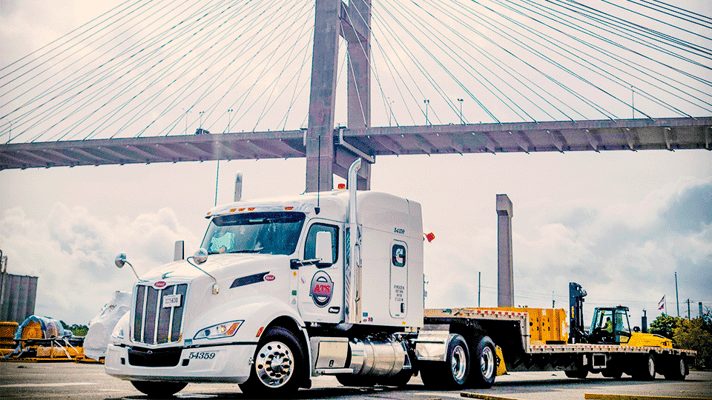
For decades now, companies have been dedicating more resources to their transportation supply chains, investing in technologies to improve processes and in-house experts to run the show.
As your organization’s logistics decision maker, there are countless stakeholders looking your way for support, expertise and follow-through. But starting out in a new transportation logistics role — regardless of how long you’ve been in this field — can be intimidating.
Here at Anderson Trucking Service (ATS), our teams have worked alongside hundreds of logistics managers (of varying tenure) at just as many companies in our 70 years in the industry.
We know firsthand how overwhelming it can be to step into a new logistics role, and know how important it is to start your job on the right foot and with the right set of priorities.
So, if you have questions, don’t worry — you’re not alone. This article will give you some actionable steps for succeeding in a “new-to-you” supply chain/logistics role.
Although your first few months will be a learning experience, here are eight of the most important things you can do when starting in a new logistics management position:
- Establish goals and performance expectations with management
- Review internal processes and procedures
- Establish budgetary baselines
- Get a handle on which key performance indicators matter
- Meet with internal stakeholders at your company
- Meet with core transportation providers to develop rapport
- Get an honest assessment from your vendors and customers
- Find an internal mentor
1. Establish Goals and Performance Expectations With Management
You play an important role at your company, one that impacts nearly everyone else’s. That said, it’s important to understand how your work relates to the wider organization.
So, when starting a new logistics-management position, one of your first steps should be to meet with other members of your organization — particularly those you report to.
In these meetings, work with your manager(s) to set the stage for the initial year, or so, of your employment. At this time, discuss your company’s supply chain/logistics goals and what, if anything, they feel went wrong previously.

It’s also important to establish baselines for how your performance will be measured.
Ask management about which metrics they’ll use to gauge your success over the next 30, 60 and 90 days. Without knowing they exist, it’ll be impossible to live up to your manager’s expectations. As such, don’t hesitate to facilitate these conversations if need be.
2. Review Internal Processes and Procedures
Another impactful activity you’ll want to tackle within your first few weeks of work is to review your company’s current logistics processes thoroughly. This will help you get a baseline understanding of where you’re at — the first step in optimizing in the future.
Dig into which processes you have in place and, perhaps more importantly, why they exist. Namely, make sure to analyze:
- The procedures in place for how information flows in your logistics division
- Your inbound truck scheduling processes
- Your outbound truck scheduling processes
- Your carrier management technologies and portal
- Your inventory turnover cadence
- Your supplier/vendor relations process
- The standard operating procedures (SOPs) you have in place with vendors
- Your current communication tree
Being a great logistics manager takes a robust understanding of your company’s existing procedures. In turn, this will allow you to make educated decisions in the future. If need be, reach out to those in charge of overseeing these tasks and ask them where they feel improvements could be made and/or current bottlenecks exist.
Related: The 5 Biggest Time Wasters for Logistics Managers (and How to Avoid Them)
3. Establish Budgetary Baselines
A substantial segment of your duties will be to manage the dollars your company allocates to transportation-related expenditures. Sometimes, when an organization undergoes a change in its logistics department, it’s seen as an opportunity to cut costs.
If this is an expectation your managers have for you, work closely with them to set realistic budgets per period (week, month, quarter, etc.). With these numbers in mind, you can start analyzing the current contract agreements your company holds with carriers. Do these contracts align with the budgets you’ve identified? If not, make sure to revise your goal(s) until new carrier agreements can be reached.
At the end of the day, securing reliable capacity takes a great network of partnerships and an appropriate budget. So, as you set yours, be sure to use market data and every resource at your disposal — don’t be afraid to consult a trusted carrier or two. Doing so will ensure your budget realistically aligns with the cost of reliable transportation service, setting you up to achieve your goal.
4. Get a Handle on Which Key Performance Indicators Matter
Key performance indicators (KPIs) are used to monitor and assess the performance of your transportation network over a period of time. Although there are a variety of KPIs to track, the ones your company uses should reflect the needs of your supply chain.
For example, in the retail industry on-time pickups and deliveries are incredibly important, leading many of these companies to prioritize on-time performance KPIs during carrier assessments.
Keeping a healthy carrier network means setting a standard and holding each transportation provider to it. So, as you get more comfortable in your position, make sure to set measurable, relevant KPIs and communicate them to the carriers you use.
5. Meet With Internal Stakeholders at Your Company
To succeed as a logistics manager it’s important to develop relationships with people all over your organization.
At the start, however, prioritize establishing rapport with the people who affect your job performance and with those who are affected by your job performance. Though your situation will vary, this should include connecting with individuals in operations, sales, customer service, distribution and warehousing.
 Build a relationship with these people first and start discussing how your roles align. Also, don’t be afraid to ask each person where they feel improvements could be made. These kinds of conversations ensure everyone is on the same page as you work toward supply chain efficiency.
Build a relationship with these people first and start discussing how your roles align. Also, don’t be afraid to ask each person where they feel improvements could be made. These kinds of conversations ensure everyone is on the same page as you work toward supply chain efficiency.
When it’s time to make a change, collaborate or have a tough conversation, having these relationships in place will help you greatly.
6. Meet With Core Transportation Providers to Develop Rapport
Most successful companies have a group of transportation providers they use most often. These core carriers are responsible for shouldering most, if not all, of a company’s transportation needs.
When stepping into a new logistics role, one of your top priorities should be to connect with these core transportation providers. Whether over the phone, in person or on a video call, touch base with the carriers your company works closest with.
At this time, introduce yourself and outline how your relationship with each carrier will function going forward.

This is also a great opportunity to set up re-occurring meetings with these companies. Establishing a pattern of accountability with your providers will help you build a more efficient transportation supply chain. Make this a priority during your first 90 days on the job.
7. Get an Honest Assessment From Your Vendors and Customers
Honesty is the best policy in business and in life. And, as a logistics manager, you’ll find that an honest review from the people who interact with your supply chain/logistics on the front lines is priceless.
Reach out to vendors and customers requesting honest feedback on how you’re doing, where you can improve and what if anything your company can do to make their interactions with your processes smoother.
As you’ll learn, matching your logistics procedures to your partners’ needs will pay dividends in the future — ensuring an ongoing relationship and continued optimization.
8. Find an Internal Mentor
Last but not least, find a mentor internally; someone you can ask questions, go to for support and workshop ideas with. Preferably, this should be someone who has held your role in the past so they can lend you expert advice and guidance as you settle in.

This person’s involvement in your job can be minimal. However, you’ll find it really helpful to have an internal teacher around to collaborate with and learn from — especially if you’ve never held a role like this before.
What Does an Unhealthy Supply Chain Look Like?
Look, starting a new role is never easy; no matter what line of work you enter, there’s always a learning curve that takes time to round. As you continue the hard work of aligning your skills and experience with the demands of this new job, take some time to assess the health of your supply chain.
Often, companies don’t realize their supply chain is in a tough spot until it’s too late.
Instead, these organizations chalk up the struggles they’re facing as “just a reality of logistics.”
However, things like poor provider performance, production cycle delays and consistently unpredictable expenses aren’t normal. In fact, well-optimized supply chains rarely deal with these problems.
So, your next step is to check out this article covering the four largest indicators of an unhealthy supply chain. You’ll also find some tips for making improvements, should these issues ever plague your business in the future.
Finally, if you have any questions about adding ATS to your transportation network, don’t hesitate to reach out. We’re happy to help you in any way you need.




